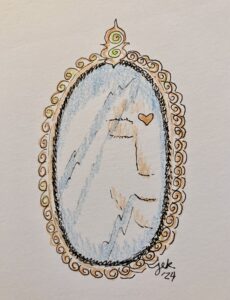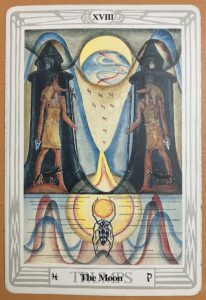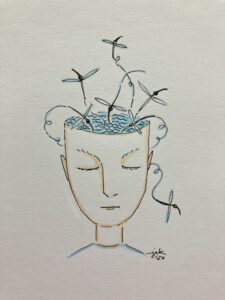
-Artwork © 2024 Jan Ketchel
The shamans of ancient Mexico emphatically prohibited the use of a mirror, literally fearing the trapping of a Narcissus-like obsession with self-reflection and self-importance. That trapping is reflected in current world leadership and governance, which strongly favors the needs of the self at the expense of the other.
The “Mirror, mirror on the wall” of the evil queen in Snow White speaks to the possibility of discovering the truth of oneself, if one looks beyond the outer persona and false beliefs, and faces the self in deep, soulful self-reflection.
The human brain and central nervous system (CNS) is full of nerve cells called mirror neurons that are proven to fire in imitation of what we see and imagine. Our behavior, and the behavior of others, forms neural networks in the brains of those who observe us. The influence of these impressions upon the brain creates the foundation for echoing or imitating these same behaviors, for better or worse.
The United States, as the world’s leading superpower, has had a powerful mirroring effect on the behaviors of many nations. The policies, fashions, and values of the United States have greatly influenced world behaviors, in their effort to become fulfilled, like a Hollywood version of America. America’s current emphasis upon self-interest and entitlement is indeed being powerfully mirrored in wars and collapsing governments around the world.
On an intrapsychic level, the power of autosuggestion is greatly enhanced by the use of the imagination to mirror to the subconscious a subtle version, or building plan, of the changes one seeks to substantially manifest in one’s life.
When we imagine something, the brain treats our thoughts and images the same way it reacts to observing outer events. These imaginings are mirrored by firing neurons that replicate and encode these behaviors into neuronal circuits. These circuits prepare the subconscious mind and brain to advance in creating these very changes in physical reality.
If our intentions in our autosuggestions embrace the greater good of the self, and the world, we will manifest healthy changes within the self and the environment. Additionally, our attitudes and behaviors will activate the mirror neurons in others, which will create similar potentials in the thoughts and behaviors of others.
This responsible use of autosuggestion can powerfully evolve the self, and powerfully influence the world, through mirroring. This is a powerful tool for those who are feeling disempowered by the current status and direction of the world.
The key here is not to try to convince or manipulate anyone, but instead to become a more evolved self that mirrors a different possibility, by simply, truly being it. In other words, become the change you seek.
Be empowered to imagine the health and evolution you seek.
Be respectful of the power of the imagination to generate what you think.
Thoughts matter. Thoughts become matter.
Matter in motion is mirrored to all.
Make your loving thoughts matter.
That’s the power in the mirror.
Imagine,
Chuck




